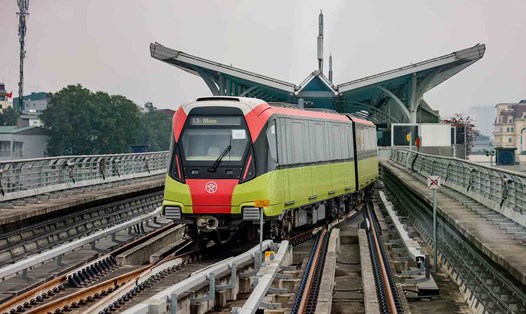Opportunities for Vietnamese enterprises
According to Mr. Tran Thien Canh, Director of the Vietnam Railway Authority (Ministry of Construction), one of the current priority tasks is to lay the foundation for localizing the railway industry, in order to gradually reduce dependence on imports and improve the capacity of domestic enterprises.
In the field of infrastructure construction, Vietnamese enterprises can master 80 - 90% of projects from the ground and below, inheriting from the accumulated capacity through the North - South Expressway project and Long Thanh airport. However, high-speed railways are another game, requiring synchronization in material standards, vibration frequency and governance capabilities.
A notable bright spot is the initiative of domestic technology corporations assigned to research operating systems, signals and electricity.
Currently, 60 - 70% of components still have to be imported, but the localization roadmap has been established. With cars, locomotives and rails, domestic enterprises can achieve 80% autonomy. As for the electricity and transmission infrastructure, Vietnam can now construct, only specialized equipment needs to be imported.
Many large corporations have proactively participated in the supply chain. Hoa Phat Group established a high-intensity steel production company to serve roadbed and tunnel projects in the Central - Central Highlands. Contractors such as FECON, Vinaconex, Cienco are also ready to receive high-tech packages.
According to Mr. Ta Manh Thang, Deputy Head of the International Cooperation and Science and Technology Department, Vietnam Railway Corporation, the existing railway industry is operating stably but still needs to regularly upgrade techniques and update new technologies.
Mr. Thang analyzed that with the Lao Cai - Hanoi - Hai Phong route, the corporation has applied Chinese technology as a testing step. On that basis, existing human resources will be trained in additional technical skills, and at the same time, a new recruitment program will be implemented for maintenance and repair. However, the force to receive the transfer of production technology, signals and designs is not enough.
From the perspective of a construction enterprise, Mr. Ho Duc An - Technical Director of FECON Joint Stock Company - assessed that this law amendment needs to specify regulations to create conditions for domestic contractors to participate more deeply in the project.
"To want domestic enterprises to participate, it is necessary to allow the appointment of bids, conditions for orders, or joint ventures with foreign enterprises according to clear regulations on localization rates" - Mr. An suggested.
Sharing the same view, Mr. Chu Van Tuan - Deputy Director of the Railway Project Management Board (Ministry of Construction) - emphasized that domestic enterprises should "connect by cluster" to focus on infrastructure, which is an existing strength. High-tech items need to cooperate abroad to both receive transfers and accumulate experience.
Le legalization for development
According to the Government's submission, the Draft Law on Railway (amended) adds many provisions to mobilize maximum resources from other economic sectors to participate in investing in the construction of railway infrastructure.
In particular, there are regulations on encouraging all organizations and individuals to participate in investing in railway infrastructure development through many forms of contracts (BT, BOT, BTO, BLT, BTL, etc.). At the same time, it is added a regulation that localities are allowed to use their own budgets to participate in compensation, resettlement support, and investment in the construction of a number of items of national railway infrastructure.
In the draft Law on Railway (amended), the Government also added the requirement that when investing in railway construction, it is necessary to ensure synchronous and efficient connection between railway lines and between railways and other means of transport; stipulate that airports, large seaports, and transport units must have a plan to connect with railways to solve the problem of synchronization and connectivity between current transport methods, promote the advantages of each method and multi-modal transport, promote the strengths of railways in freight and passenger transport, large volumes, medium to long distances.
These amendments to the draft railway law are expected to be a stable legal corridor to bring the railway industry to strong modern development in the coming time.










